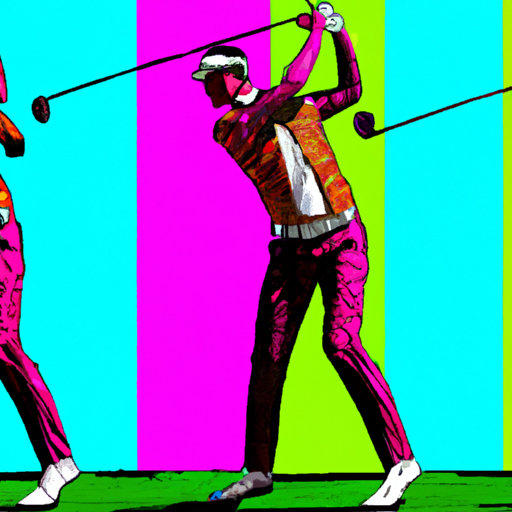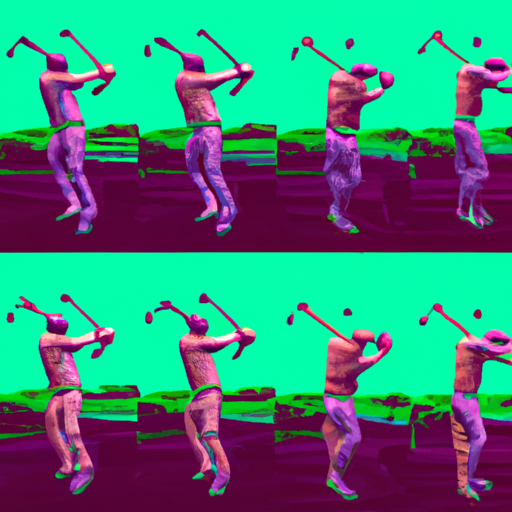- Home
- Golf Swing
- Proper Golf Backswing Sequence
Master the Perfect Golf Backswing Sequence for a Powerful Swing
Attention, all golf enthusiasts!
Are you struggling with inconsistency and lack of power in your golf swing?
The solution to your problem lies in mastering the proper golf backswing sequence. A well-executed backswing is crucial for generating power, improving accuracy, and ensuring consistency in your golf shots.
By understanding the mechanics of the backswing and breaking it down into its key phases, you'll be able to enhance your golf game significantly. The perfect backswing sequence can be the difference between a mediocre swing and a powerful, accurate shot that leaves your friends in awe.
Desire to improve is the first step to success.
As you delve into the world of golf backswing sequences, you'll discover essential tips and techniques that can transform your golf swing. Whether you're a beginner or an experienced golfer, there's always room for improvement, and the perfect backswing sequence is the key to unlocking your true potential.
Action is the final piece of the puzzle.
With a combination of knowledge, practice, and determination, you can master the perfect golf backswing sequence. In this article, we'll guide you through the process, offering advice and actionable tips to help you achieve a powerful, consistent golf swing that will make you the envy of your golfing buddies.
The Golf Backswing Sequence: Your Key to Power and Precision
When it comes to golf, the backswing is a crucial element to achieving the perfect swing. In this comprehensive guide, we'll break down the proper golf backswing sequence step-by-step, allowing you to hit the ball further, more accurately, and with greater consistency.
So grab your clubs and let's get started on unlocking your full potential on the course!
A proper golf backswing sequence is vital to your overall swing technique, as it sets the stage for a powerful downswing and accurate ball striking. To master this, follow these four key phases:
- Setup and Address
- Takeaway
- Backswing
- Transition
1. Setup and Address
Establishing a solid foundation with a proper stance and grip is crucial to achieving a great backswing. Here's what you need to do:
- Stand with your feet shoulder-width apart, and bend your knees slightly.
- Position the ball off your front foot's instep.
- Align your clubface with the target, and take a neutral grip on the club.
- Relax your arms and shoulders, maintaining a straight spine.
2. Takeaway
The takeaway is the initial movement of the club, setting the tone for the entire backswing. It's essential to get this right for a smooth, powerful swing.
- Keep your arms straight, and move the club back slowly by rotating your shoulders.
- Maintain a one-piece takeaway, keeping your wrists relatively firm.
- Keep your head steady, focusing on the ball.
- The clubhead should remain low to the ground during the initial part of the takeaway.
3. Backswing
The backswing is the main phase where you generate power and coil your body for the downswing.
- Continue rotating your shoulders, with your left arm straight and your right elbow folding.
- At the halfway point, your club shaft should be parallel to the ground and pointing towards the target.
- Keep turning your shoulders until your back faces the target.
- Maintain a stable lower body, with most of your weight on the inside of your right foot.
4. Transition
The transition is the moment when your backswing ends, and your downswing begins. It's vital to time this phase correctly to maintain the power and accuracy of your swing.
- Begin the transition by shifting your weight from your right foot to your left.
- Allow your hips to initiate the movement, followed by your torso and then your arms.
- Keep your head steady and focused on the ball throughout the transition.
Common Backswing Mistakes and How to Fix Them
Mistakes in your backswing can lead to loss of power, accuracy, and consistency. Here are some common errors and how to correct them:
Error: Overswinging or too much wrist hinge.
Fix: Maintain a controlled backswing with minimal wrist hinge, focusing on shoulder rotation instead.
Error: Swaying or sliding during the backswing.
Fix: Keep your lower body stable, allowing your upper body to rotate around your spine.
Error: Picking the club up too quickly.
Fix: Maintain a slow, low takeaway, allowing the club to follow a natural arc.
Drills to Improve Your Golf Backswing Sequence
Here are three effective drills to help you practice and perfect your golf backswing sequence:
The Wall Drill: Stand with your back against a wall, holding a club. Practice taking the club back without touching the wall, ensuring a controlled, tight backswing.
The Mirror Drill: Stand facing a mirror and practice your takeaway and backswing, focusing on maintaining proper positions and alignment.
The Towel Drill: Place a towel under your right armpit (for right-handed golfers) and take your backswing. Keep the towel in place throughout the swing to ensure a compact, connected motion.
Key Takeaways: Mastering the Golf Backswing Sequence
To summarize, mastering the perfect golf backswing sequence involves understanding and executing the four key phases: Setup and Address, Takeaway, Backswing, and Transition. By focusing on these elements, you can improve your power, accuracy, and consistency on the golf course.
- Ensure a solid foundation with a proper stance and grip.
- Maintain a controlled, one-piece takeaway.
- Generate power during the backswing through shoulder rotation and a stable lower body.
- Time the transition phase correctly by initiating the movement with your hips.
Remember to practice regularly, and consider incorporating the suggested drills into your training routine to further enhance your backswing technique. Keep refining your backswing, and you'll soon see improvements in your overall golf game.
Good luck, and happy swinging!
Frequently Asked Questions: Golf Backswing Sequence
What is the importance of a proper golf backswing sequence?
What is the importance of a proper golf backswing sequence?
A proper golf backswing sequence allows you to generate maximum power and control during your swing, leading to increased distance and accuracy in your shots.
How does the setup and address phase affect the backswing?
How does the setup and address phase affect the backswing?
The setup and address phase helps to establish a solid foundation for your swing by ensuring proper alignment, weight distribution, and grip, which directly impacts the effectiveness of your backswing.
What is the role of the takeaway phase in the backswing?
What is the role of the takeaway phase in the backswing?
The takeaway phase sets the stage for the rest of the backswing by moving the club away from the ball in a controlled manner, ensuring that the clubface remains square to the target line.
How does the transition phase contribute to a powerful swing?
How does the transition phase contribute to a powerful swing?
The transition phase shifts your weight from your back foot to your front foot, generating power as you move into the downswing, while also maintaining the correct swing plane for consistency and accuracy.
What are the key elements of the top of the backswing position?
What are the key elements of the top of the backswing position?
At the top of the backswing, your lead arm should be straight, wrists fully hinged, and the clubface square to the target. Your body should be coiled, with your weight primarily on your back foot, ready to transfer energy into the downswing.
How can I practice and improve my golf backswing sequence?
How can I practice and improve my golf backswing sequence?
You can practice your golf backswing sequence by breaking it down into individual phases and focusing on each aspect separately. Use drills, video analysis, and feedback from a golf instructor to ensure you are making the necessary adjustments to your technique.
What are common mistakes golfers make during the backswing?
What are common mistakes golfers make during the backswing?
Common mistakes during the backswing include lifting the club instead of swinging it back, swaying laterally instead of rotating, and not maintaining the proper spine angle throughout the swing.
How long does it take to master the perfect golf backswing sequence?
How long does it take to master the perfect golf backswing sequence?
The time it takes to master the perfect golf backswing sequence varies based on your current skill level, commitment to practice, and the guidance you receive from a qualified golf instructor. However, with dedication and consistent practice, you can expect to see noticeable improvements in your swing within a few months.


















